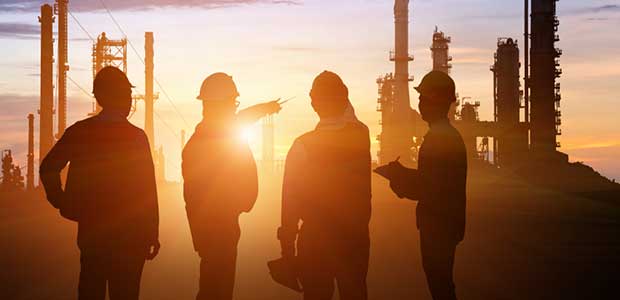
Enhancing Safety and Sustainability through a Data-Driven Approach to Gas Detection
For some companies, data has become a critical part of safety and sustainability programs.
- By Mark Silvester
- May 01, 2021
As the gas detection market has matured over the years, a growing number of industrial organizations have invested in high-tech monitoring devices, such as personal and wearable gas detectors, in order to analyze levels of gas exposure and keep their people safe.
These organizations are increasingly taking a “connected” approach to safety by using these devices to ensure field workers and a monitoring team to remain in touch at all times. This connectivity has enabled workers to always have somebody watching over them in order to keep danger at a distance.
As many of these modern devices coming equipped with the most advanced capabilities—such as two-way voice communications, push-to-talk, automatic detection and even close contact alerts amid COVID-19—organizations may feel that they have a comprehensive gas detection program.
If companies, however, are relying solely on hardware to keep their people safe, there are gaps in this approach that may leave workers vulnerable to longer-term threats, such as volatile organic compounds (VOC) exposure.
In today’s landscape, the most advanced, GPS-enabled monitoring devices produce millions, often billions, of data points each day. Those points may include location of workers throughout the day as well as where low-level gas readings are present across a worksite.
In order to implement the most effective gas detection strategy, organizations must also utilize the data produced by their respective devices, as it offers valuable insight that will allow for better, more informed decision making both in the short and long term. In addition to helping keep people safe, using data proactively can also support an organization’s sustainability goals.
For companies such as or similar to mine, data has become a critical part of safety and sustainability programs in the following ways.
Greater Visibility
Austrian consultant Peter Drucker once said, “You can’t manage what you can’t measure.”
I’d build on Mr. Drucker’s famous quote by saying that you can’t improve what you can’t see. These quotes exemplify exactly what data brings to an organization—helping teams establish and track metrics and see what they otherwise couldn’t. Through data, safety teams have full visibility into every aspect of a worksite, including employee behavior and gas exposure.
Without these insights, organizations are often left to wonder exactly how safe their people are, conducting guesswork based on manual checks or employee testimony in an effort to improve safety protocols.
Enhanced Safety Practices
Especially in an organization like mine, where we have tens-to-hundreds of people working to extract landfill gas for renewable energy generation any given day, it’s critical you understand exactly how you are ensuring safety at all times. Gas exposure in the waste resource industry, among others like oil & gas and power generation, are a significant threat to short- and long-term worker health and safety.
By utilizing the data produced by monitoring devices, organizations are presented with fact-based evidence of gas readings over time. So, instead of simply reacting to high gas levels in real-time, data enables safety teams to proactively forecast exposure trends. This enables organizations to make tangible adjustments to practices based on fact, mitigating exposure threats in the future and therefore strengthening safety programs.
Faster Decision Making
Being presented with fact-based data helps organizations make decisions faster and more effectively. There’s no need to depend on subjective opinions over the course of weeks when data from monitoring devices provide insight in real-time on whether safety measures were effective after a couple of days.
Further, many organizations still take the pen-and-paper approach when conducting Flame Ionization Detectors (FID) surveys, where a monitoring technician manually measures gas concentration at various points across a worksite. By utilizing monitoring devices for these surveys instead, teams can gather gas levels quickly, cohesively and often much more accurately, allowing for decisions and adjustments to be made faster and with greater confidence.
Stronger Sustainability
In addition to ensuring worker safety, the data produced by monitoring devices can also serve as a meaningful part of a company’s sustainability program. Organizations in industries such as waste resource, oil and gas, power generation and more, play a key role in environmental responsibility and stewardship, and therefore often must remain in compliance with climate-control regulations in most areas around the world.
Data can be a useful tool for monitoring and reporting metrics that contribute to these efforts, such as measuring gas capture rate or methane emissions across worksites. Since this data is grounded in evidence, it’s a good idea to consider including these metrics as part of your reporting to environmental or regulatory agencies, when appropriate. For some organizations, this data has also been a key part of their annual sustainability reports, in which they can show tangible improvements toward their environmental goals.
Using Data for the Greater Good
Whether it’s aiming to improve gas capture rate or limit exposure to VOCs, capturing and analyzing the data from monitoring devices will provide significant return on both your safety and sustainability objectives.
Implementing any change to existing processes and procedures could present various internal and external challenges. Safety should not be a competitive advantage, and that’s why the sharing of best practices, experiences and ideas across industries to solve challenges, both on this topic and others, should always be prioritized for the common good. We do this through a network called Blackline Collective. With the Collective and other companies, we’re working to break down competitive and industrial barriers and advance workplace safety for all with the ultimate goal in mind: keeping our people safe.
This article originally appeared in the May 1, 2021 issue of Occupational Health & Safety.